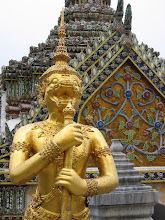Vamsapala:5301201125
Contents
Abstract
1
Introduction
1
Architecture in Laos
2
Role
and Contribution
4
Influence Culturel
5
Conclusion
6
References
6
Abstract
In many aspects, human gradually evaluated time
to time as well as he introduce history of world. Respectfully, each country
has different human civilization background but of course, the world has
multicultural in every single society that we have. People are Innovating themselves under the
modern technology development in many ways. However, on the other hand, the men
maintain history and arts as a human dignity nowadays. Therefore, Laos is one
the Asean Country, who preserves arts and architectures time to time in their
traditional ways that we are learning today.
Architecture
in Laos










 1:10 AM
1:10 AM
 mr.vam
mr.vam


 Hinduism
is perhaps the oldest religions of the world. According to Veda scripture ,
Hinduism is
Hinduism
is perhaps the oldest religions of the world. According to Veda scripture ,
Hinduism is
 Translate
Translate